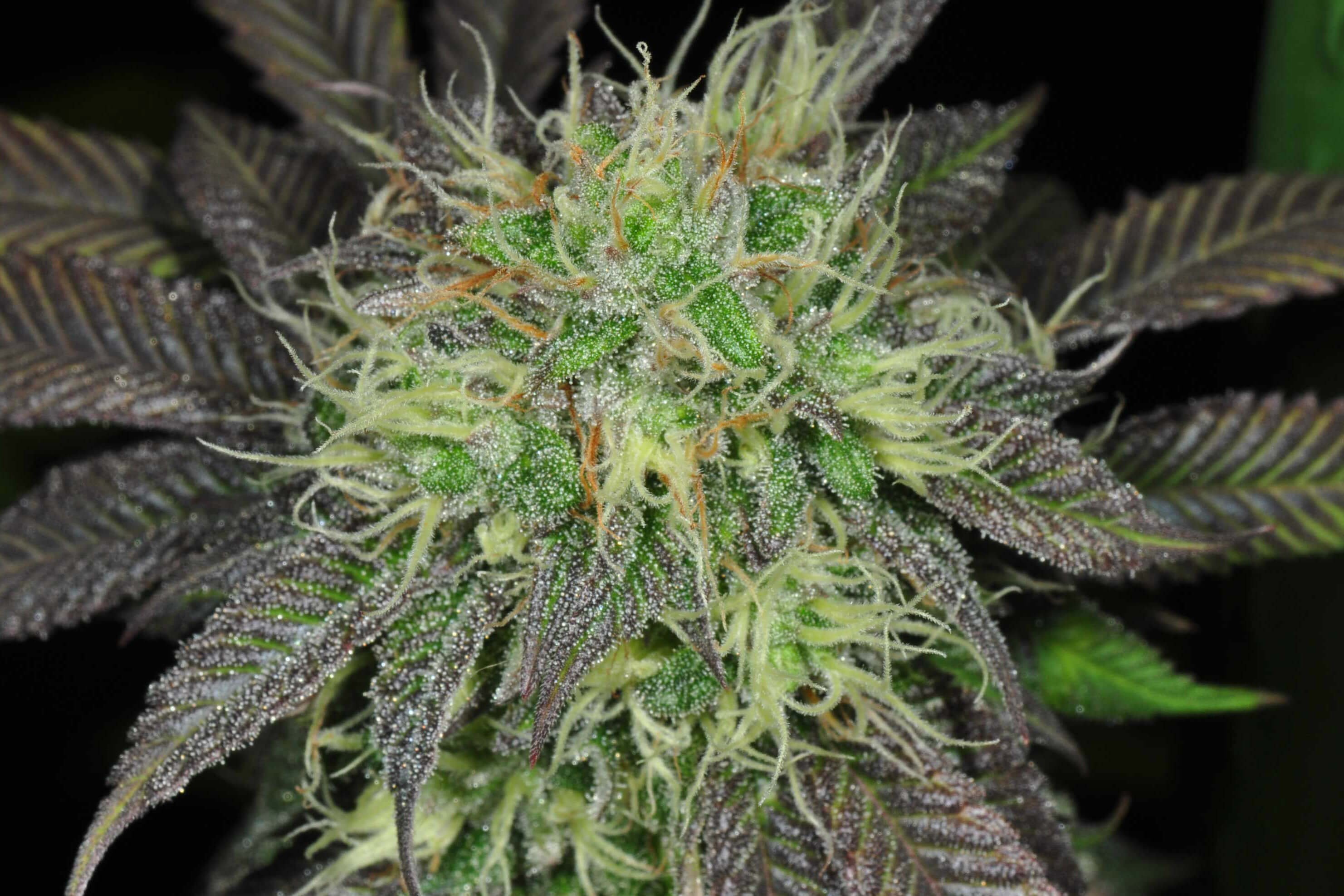
When growing cannabis, every grower has a different goal. Many people need medical marijuana to relieve some of their symptoms, while others need cannabis for recreational use. Often, growers want to maximize the amount of THC and other cannabinoids (i.e. increase the power of the buds).
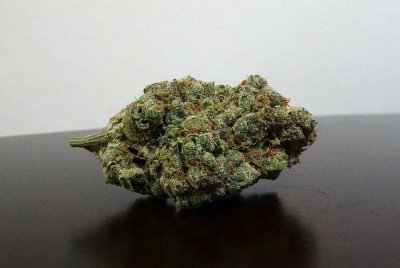
This bud has the highest possible THC levels , so it's dense, sticky, and looks great.
Why Increase THC Levels ?
You will get stronger psychotropic effects from the same number of buds (your harvest will be consumed more slowly!); Many medical marijuana growers need high levels of THC to relieve nausea, certain types of pain, spasticity, certain symptoms of multiple sclerosis, etc .; Many THC- boosting tricks will also increase your overall yield. However, not everyone wants the highest THC levels in their buds, and some may need other cannabinoids that are found in certain strains. For example, many medical marijuana growers prefer low THC and high CBD cannabis , which is non-psychotropic and may be of interest to those seeking relief from anxiety and seizures.
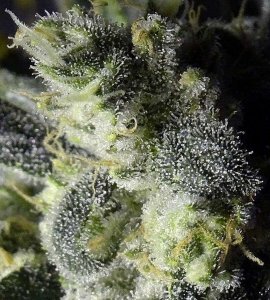
Most of the THC on which buds are powerful is found in glittering trichomes.
What increases THC levels and bud strength?
Here are the most important factors affecting THC levels and bud strength:
Variety and plant genetics;
Harvest time;
Plant health and care;
Lighting intensity;
The curing process;
Common myth: CO2.
Genetics of the variety and individual plant
The genetics of your plant is by far the most important factor in the potency of cannabis. It determines the limit value for the level of THC and other cannabinoids that the plant can produce. With a variety of growing methods, you can raise THC levels within these values, but you cannot go beyond the genetic capabilities of the variety and plant.
As a rough example, let's take a cannabis strain that can produce a maximum of 15% THC . This means that if you grow the plant incorrectly, the buds will have less than 15% THC , but no matter how hard you try, you won't be able to exceed this limit. To get really potent buds with high THC levels , it's important to find strains with good genetics from a reliable source.
Harvest time
Many growers are unaware that they are harvesting too early, which significantly reduces bud count and vigor.
During the flowering stage, there is a 2-3 week period when the plants are ripe and the buds contain the maximum amount of THC . At this stage, the tiny gum-secreting glands (trichomes) turn milky white and most of the white hairs (pistils) darken and curl inward.
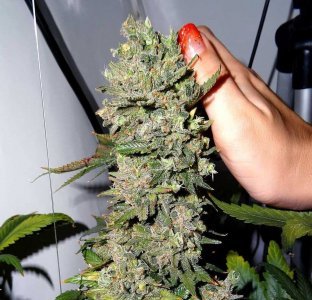
The highest THC levels are achieved when most of the white pistils are darkened and curled up (the bud looks more massive)
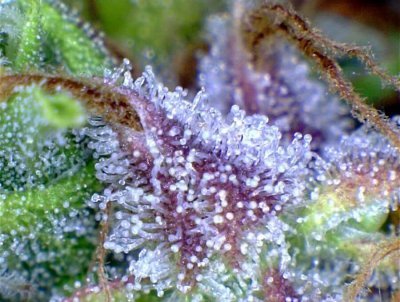
Most of the transparent trichomes (like glass ones) turned white (and looked like white plastic)
If the plant is allowed to mature further, the cannabinoid profile will continue to change. buds harvested later are more relaxing, and the psychotropic effects of THC may not be as pronounced.
By harvesting early, you prevent the plant from reaching its full potential. Sometimes buds picked early will speed up the flow of thoughts or cause headaches (treatment will help), so try to avoid this situation whenever possible!
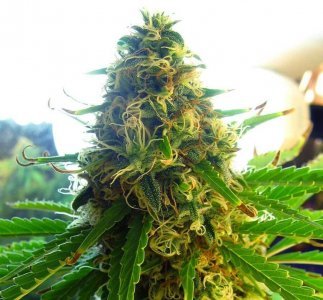
This cola takes several more weeks before it reaches its maximum THC levels . If you collect the buds now, their impact strength will be lower and the buds themselves will be less.
Plant health and care
For cannabis to produce the most potent buds, you need a strong and healthy plant that receives plenty of direct light during flowering. It's important to avoid common mistakes like over or under watering, heat stress, root and fertilization problems, and irregular lighting cycles.
Light intensity
Although cannabis can grow in low light, it won't form many buds during the flowering stage without bright light. Light is also needed for the accumulation of THC and cannabinoids. Outdoors, plants require more than eight hours of direct sunlight a day to reach their full potential, while indoors you need powerful, bright lights (such as LED, metal halide, or HPS).
Curing process
While there is no clear evidence that the healing process directly increases THC levels , there is ample evidence that this increases the perceived power of buds. The mechanism itself is not yet fully understood, but it may be due to chemical changes during treatment that amplify the effects of THC and other cannabinoids.
The cure also has other benefits. For example, freshly dried buds often smell like cut grass or hay, even if they smelled great during the flowering stage. Healing helps to get rid of unpleasant herbal taste and odor and returns the natural one.
Finally, untreated and early harvested buds can speed up the flow of thoughts or cause headaches in some.
Common Myth: Using CO2 Increases THC Levels
While the use of CO2 can actually increase yields, there is no evidence that it increases bud power.
How to Increase THC of cannabis Before Harvest
Unknown: These growing methods may increase THC levels , but they haven't been tested yet
Here are some of the common ways that growers try to increase their THC levels in cannabis. They are considered untested because they do not have strong scientific evidence:
Additives;
Vegetation longer than 8 weeks;
Lack of pollination;
Range of grow lights;
Special washing methods.
Supplements that increase THC levels and total bud strength
There are many supplements for growing cannabis, each with a different purpose. Some of them work great, while others are completely useless.
Most bud additives increase yield or taste. However, some are said to increase bud strength and THC levels .
Unfortunately, there are currently no supplement companies that perform systematic tests to show that their product actually increases THC levels . Because of this, I cannot recommend any of them.
Growing stage for 8 weeks or longer
I have been told about this by various growers over the years, but so far this information remains ambiguous. The idea is that cannabis needs to remain in the growing season for at least 8 weeks in order to reach maximum THC levels during flowering.
So the plants become larger and stronger than ordinary ones, they give a much larger yield. But does this mean THC levels are also on the rise? This is likely, but it could also be related to other factors. For example, large plants are usually grown by experienced growers under powerful grow lights, and both of these aspects affect the strength of the buds, so this theory needs further testing.
My verification plan (hopefully someday I will have more space to grow and I will bring it to life!):
Germinate several seeds of a stable cannabis strain such as Northern Light to reduce the effects of genetic variation on plants;
Leave the seedlings in the vegetative stage for 8 weeks, then cut a clone from each one. Although the clones are the same size as the seedlings, their internal age is the same as that of the mother plants - 8 weeks;
Germinate more seeds of the same variety and grow them up to about 3 weeks so they are the same size as the clones. This will have to be planned, as it is necessary so that when the specified age of the seedlings is reached, the clones have time to take root. Seedlings cannot start blooming until they are 3-4 weeks old. To eliminate as many variables as possible, you need to create the same conditions for all plants;
Now that you have 3 week old seedlings and 8 week old clones of the same size, bring them into flowering stage;
Test your THC levels after harvest . If the buds from the clones are more powerful than those from the seedlings, I think this will serve as sufficient proof. If not, you can try another test!
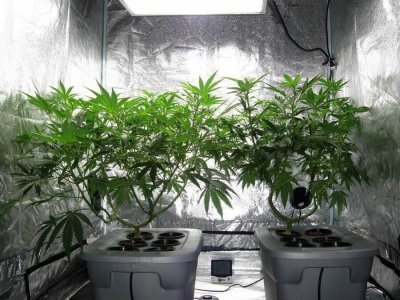
Allowing the plant to grow strong before putting it into flowering will definitely result in larger bushes and higher yields, but it is not known if this increases the potency of cannabis buds.
No pollination (production of "sensimiglia")
Just a few decades ago, all the cannabis that could be found was full of seeds. Unbeknownst to many growers, during the flowering stage, male and female plants need to be separated to prevent pollination and seed emergence.
However, as more information began to emerge about cultivation techniques, including preventing pollination, marijuana called sensimiglia began to gain popularity. The word sinsemilla consists of the Spanish word sin (without) and semilla (seed) and means cannabis without seeds.
The sensimiglia buds that flooded the market were much more potent than the previous low-quality seed buds. Because of this, the word sensimiglia has come to mean high quality and very potent cannabis. In fact, this showed that seedless buds are stronger.
While this may well be true, there is no strong evidence that the lack of pollination at the time significantly increased bud vigor. Around the same time that growers started producing buds without seeds, cannabis breeding began to develop. There were publications from which growers learned about improved growing methods.
Cultivation and breeding techniques were improved at the same time. Perhaps the buds are more powerful thanks to improved genetics. In those days no one was involved in comparison, most were satisfied with the mere presence of a sensimiglia.
However, the lack of seeds will greatly increase the perceived quality of the buds as well as increase yields, so this is important for any grower whether or not they want to boost their THC levels ! Avoid pollination of female plants - get rid of male plants or use feminized seeds.
Grow light type and spectrum: HPS, LED and LEC
Different types of grow lights have a different spectrum (color temperature). Some growers believe that growing cannabis under a specific light spectrum of LED or LEC grow lights can increase resin production and THC levels . Others are convinced that this requires HPS grow lights.
Special cleaning methods
To cleanse the plants, the grower rinses them: he gives them regular water in the last weeks before harvesting. This is so that the cannabis can use up all the nutrients that have accumulated in the buds that can affect their taste or smell.
However, there are several additional types of cleaning that many growers believe will increase THC levels . Most of these are used in addition to the usual pre-harvest washing. Unfortunately, not many tests have been conducted and it is not known which methods work, but many experienced growers recommend trying them.
Not all of them work together (for example, some believe harvesting in the morning, while others believe that the most THC can be obtained by harvesting at night), but here are the most common methods:
leave the plant in the dark 2-3 days before harvest;
harvest in the morning;
harvest in the dark;
water the plants with ice water before harvesting;
cut the plant, turn it over and hang it whole for several days before trimming and drying buds.
Air temperature, humidity and over-watering
This section appeared after reading the results of a six-year study on technical hemp. Although hemp is closely related to cannabis, it is not the same plant, so the information should not be taken for granted. In a study, researchers found that the following environmental factors increase THC levels :
High humidity;
Relatively high air temperature;
Low probability of precipitation.
Since the study was conducted on outdoor cannabis, it is difficult to determine if these factors will affect the THC of indoor cannabis. However, maintaining a relatively high temperature (at least 20 ° C) and avoiding over-watering is really important.
It is common knowledge that lower moisture levels at the end of flowering increase THC levels , but research has shown that the amount of THC in hemp increased at higher moisture levels, which is thought provoking.
Conclusion: it's time to grow more powerful cannabis!
There are techniques that will definitely maximize the THC level of cannabis, while others can increase the power of buds, but their effect has not been tested.
If you are serious about raising your cannabis THC levels , follow all the steps above. Choosing the right strain, plenty of bright light, proper plant care, and proper harvesting, drying, and curing are the most important steps you can take to increase the THC levels in your buds. Fortunately, most of the untested methods will not harm the plants, so you can try them as well.























